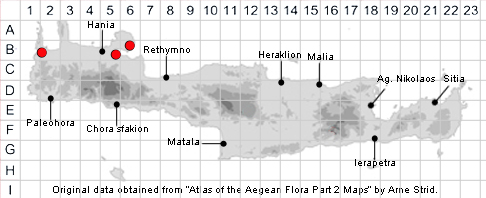SPECIES DESCRIPTION
EUPHORBIA PTEROCCOA
Family and Genus:- See- EUPHORBIACEAE/Subgen. ESULA/Sect. HELIOSCOPIA
Common Names:-
Homotypic Synonyms:- Tithymalus pterococcus.
Meaning:- Euphorbia (L) For Euphorbus, physician to the King of Mauritania.
Pterococca (Gr) Winged-fruits.
General description:- Erect, glabrous annual.
Stem:-
1) Usually simple, 5-20 cm tall. often with axillary rays below the terminal umbel.
Leaves:-
1) Cauline, spathulate to oblanceolate, thin, serrulate at least in the upper half.
2) Lower, shortly petiolate.
3) Ray-leaves, like the cauline.
4) Raylet leaves, ovate-rhombic, yellowish-green.
Flowers:-
1) Rays, 3-5, filiform, (rarely more), trichotomous then dichotomous. slender.
2) Glands, transversely elliptical, not horned, greenish or yellowish.
Fruit:-
1) Capsule, 1.5-2 mm, smooth, with 2 conspicuous, undulate wings on each valve.
2) Seeds, c. 1.2 mm, broadly ovoid, alveolate, brown, caruncle, lacking or
inconspicuous
Key features:-
1) Glands, ovate, entire.
2) Stems, usually solitary.
3) Capsule, winged.
4) Seeds, alveolate-reticulate.
Habitat:- Field margins, olive groves and dry open shrubby vegetation, 0-200 m, rare
but inconspicuous and perhaps overlooked.
Distribution:- Scattered in coastal areas of W Peloponnisos and Ionian Islands. -
Mediterranean region, mainly in the W & C parts, Macaronesia. Rare on Crete
currently known from only a few location in the N.W.
Flowering time:- March-May
Photos by:- A. N. Other
